UDI Office: Intuitive Wayfinding
With Léa Brochard
In collaboration with the Norwegian Directorate of Immigration, this project started with a giga-map focused on the user of UDI offices and lead to a complex wayfinding project setting guidelines for the new 17 offices all over Norway. The actual Oslo office is taken as a case study.
With Léa Brochard
In collaboration with the Norwegian Directorate of Immigration, this project started with a giga-map focused on the user of UDI offices and lead to a complex wayfinding project setting guidelines for the new 17 offices all over Norway. The actual Oslo office is taken as a case study.
Proceeding from System Oriented Design we went to “ System Oriented Design and Architecture”. Indeed our project is combining different fields ; Architecture and Design, utilizing System thinking to explore UDI’s field: immigration in Norway. the result is a Comprehensive Wayfinding System.
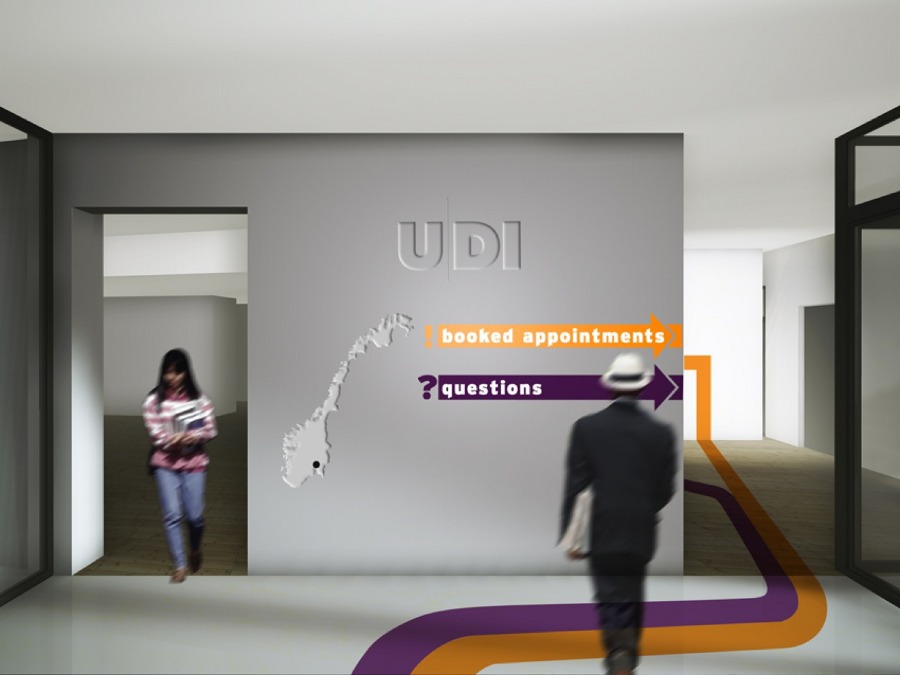
Our project is developed in three main points:
1. Set Oslo office as an example of way finding.
1. Set Oslo office as an example of way finding.
The Police office in Schweigaards gate will host UDI by 2013. Starting from the plan we improved the space in the building by making it more intuitive. No more dead ends, better orientation for UDI employees and for the applicants, better traffic flow and circulation. By adding some layers (Sight - Touch - Sound - Smell) we reshaped the interior, defining new areas (long & short waiting areas - children zone - counters - information desks - restrooms). Color & shape code, different floorings, local sound are now here to guide the users into the space. The aim is to avoid visual pollution thanks to an economy of signage. Few information. Clear information.
2. Provide guidelines for the future UDI offices
Even if the 17 offices have different localizations, qualities or space, we can provide a good interior experience. The aim is to make this space a service area for the applicants and a working area for UDI employees by following the guidelines developed in the Oslo office. Their implementation is based on a multi-sensory process :
1. Identifying /marking a space 2. Grouping the spaces 3. Linking & organizing spaces.
Those principles are low tech, durable and flexible.
1. Identifying /marking a space 2. Grouping the spaces 3. Linking & organizing spaces.
Those principles are low tech, durable and flexible.
3. Map the senses
We did not want to drop the system thinking method while dealing with our answer to the subject. We mapped the senses used by an applicant while visiting UDI office. For that we divided his stay into 6 steps:
We did not want to drop the system thinking method while dealing with our answer to the subject. We mapped the senses used by an applicant while visiting UDI office. For that we divided his stay into 6 steps:
1. Enters the office 2. Finds his way 3. Wait 4. Number/name call 5.Meeting at the counter 6. Way out.


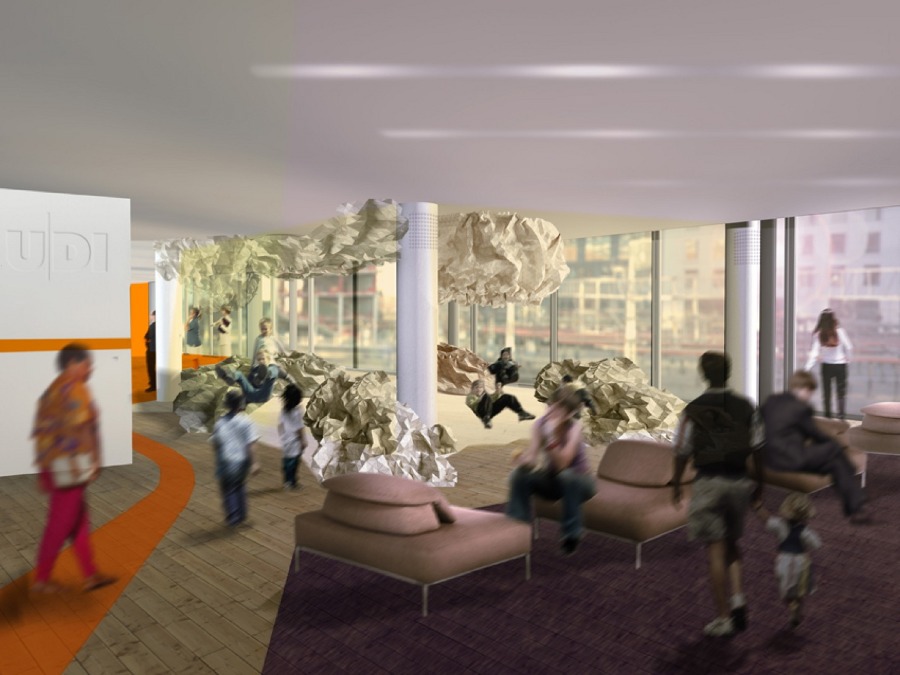

....................................................................................................................................................................................
Giga-mapping process
Through meetings and workshops with UDI, research, reading, analysis of our own experience as users and processing all the data, we developed our map human focused and user-centered.
By creating the links and naming the relations we found several points of innovation.
The next step of the process lead us to do more research on certain areas ofthe map. We created an additional GIGA-map, centered on the Interior Experience of the user in UDI offices.
By creating the links and naming the relations we found several points of innovation.
The next step of the process lead us to do more research on certain areas ofthe map. We created an additional GIGA-map, centered on the Interior Experience of the user in UDI offices.



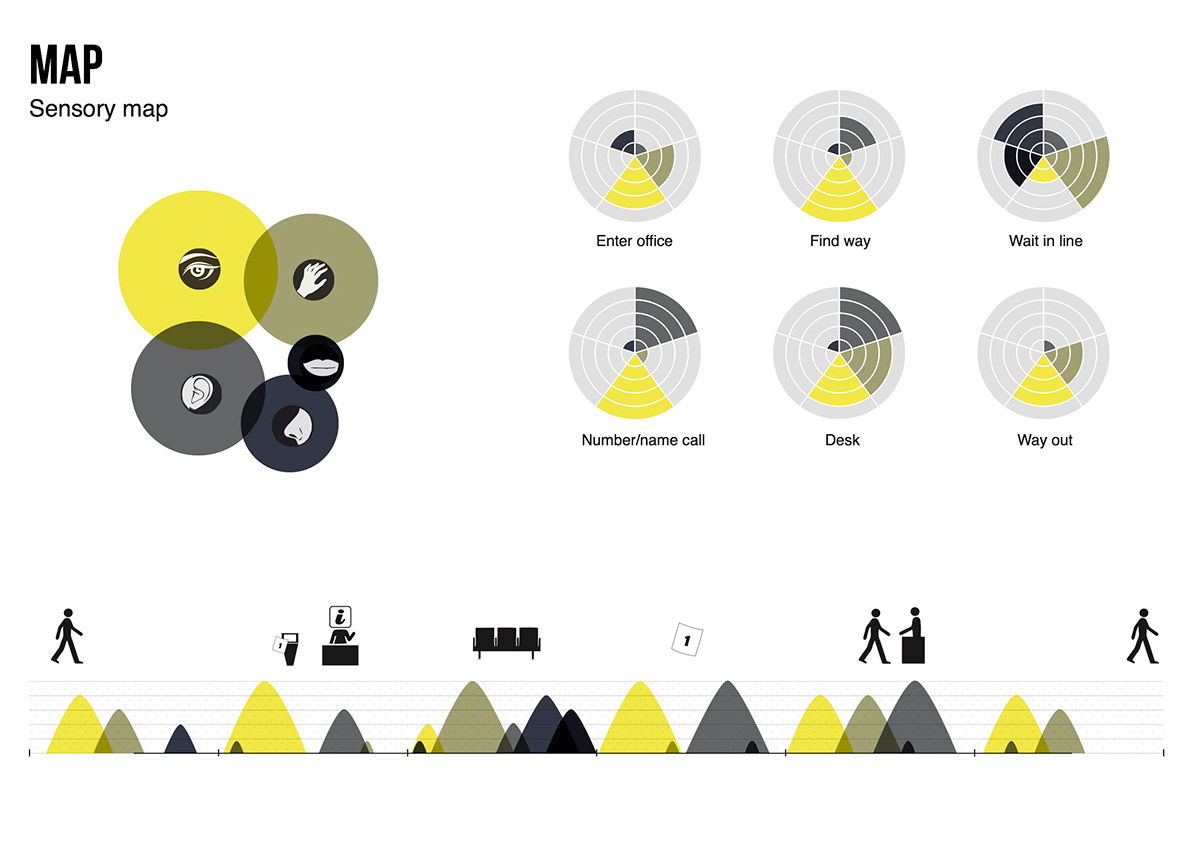
....................................................................................................................................................................................
Findings & Results
1. UDI related
Our partner UDI was facing numerous challenges. User satisfaction, delay to handle the cases, bad press are some among many others. ⅓ of the applicants is weak languages. This striking number guided us to design a
more visual world for UDI. This world has to be apply to each media UDI is using: in printed documents or in the web site. Indeed one of the main problem that UDI faces is the important amount of information (laws, decree ...) that they have but still haven’t find a way to make understandable to everyone. We also realized the challenge of welcoming at least twice more people everyday in the offices.
2. Signage related
Among other findings we learned that way finding should include more than today’s three visual information’s step (color - type - image). An effective signage also includes:
- Sight as a whole (light - response to light - color - psychology of colors - visual comfort - visual accessibility...).
- Smell (air quality);
- Smell (air quality);
- Sound ( information - ambient sound);
- Touch (tactile map & comfort)
These senses are four other main layers used to structure the project. Intuition & Memory should be use to guide the user in order to avoid dependence on signage.


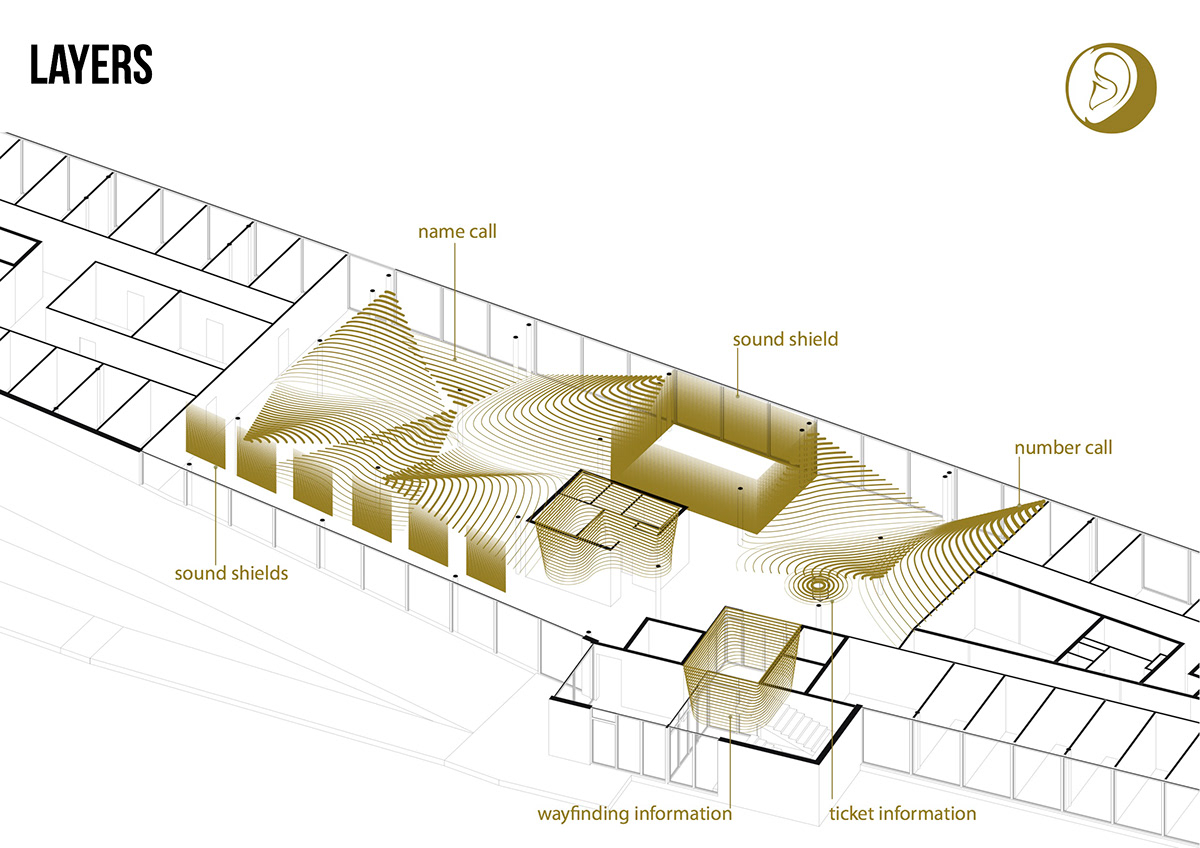
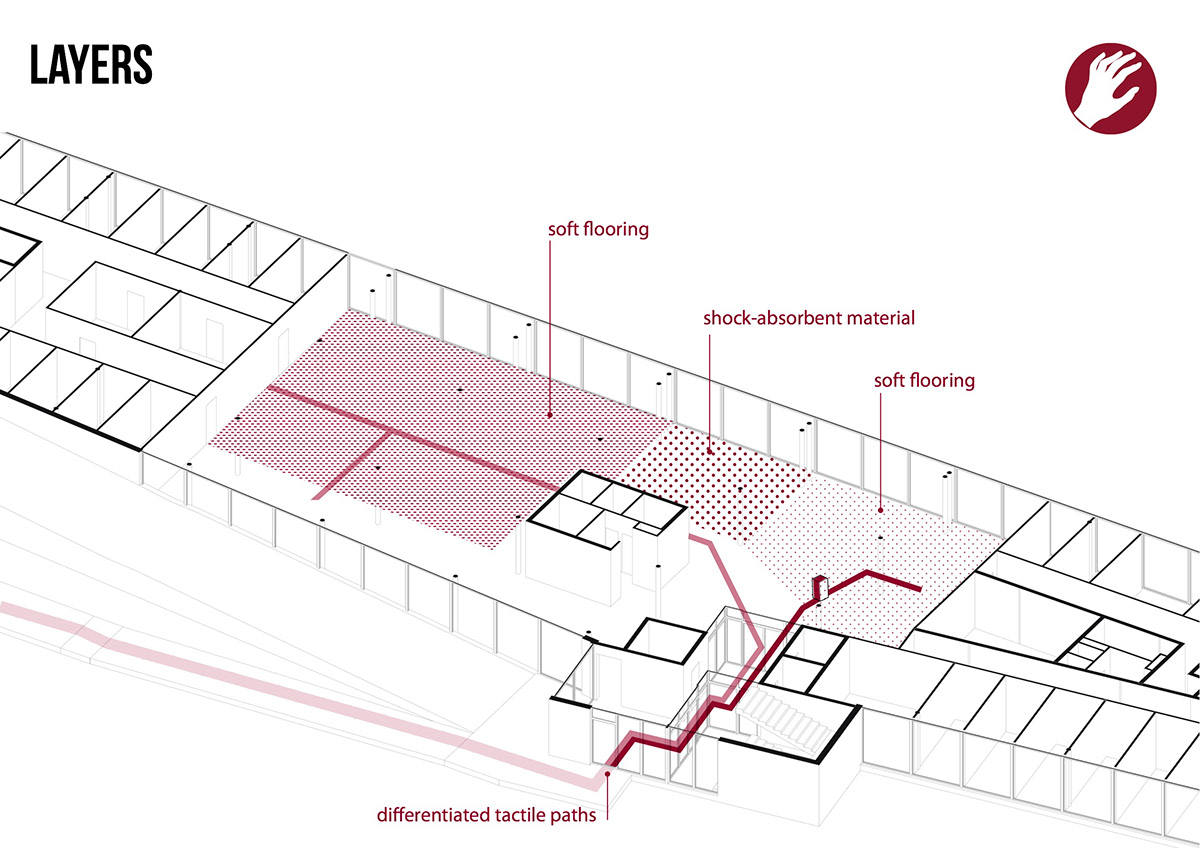
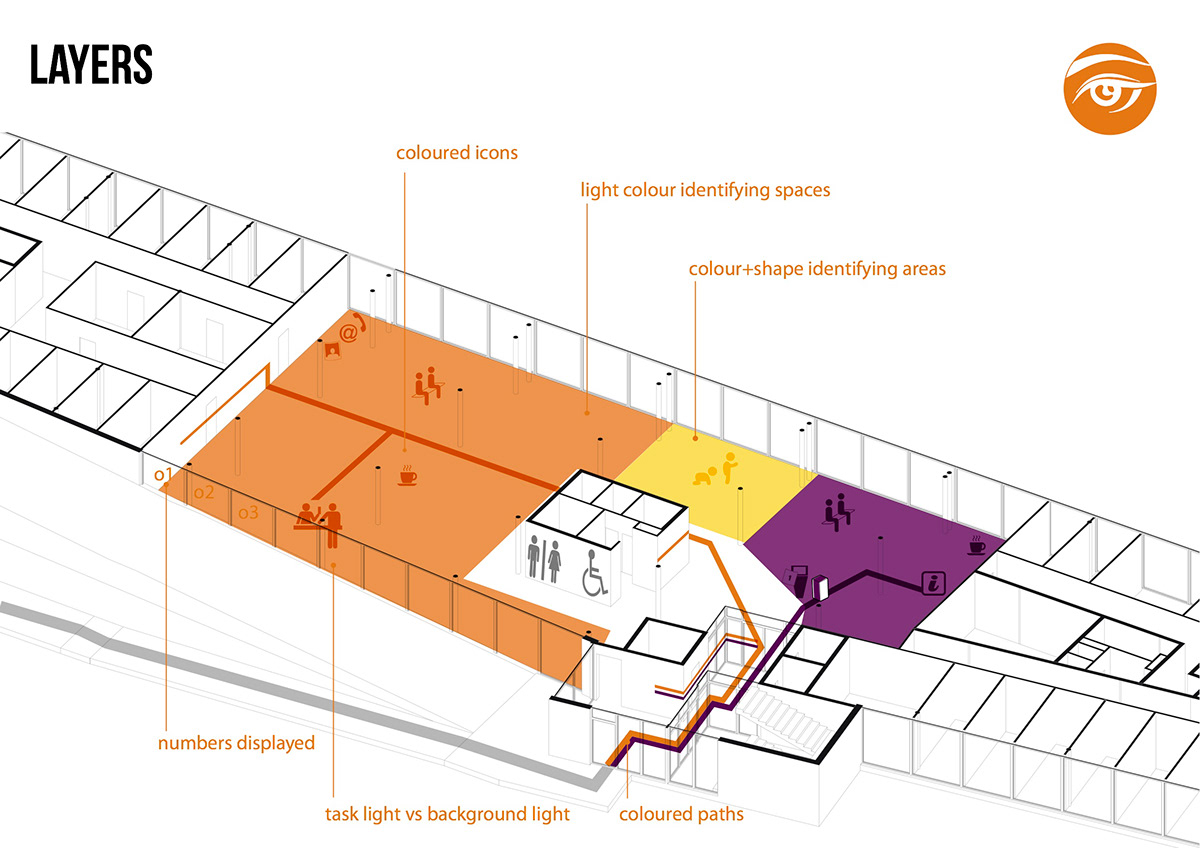
.....................................................................................................................................................................................
Exhibition
Aho Works, Fall 2011








